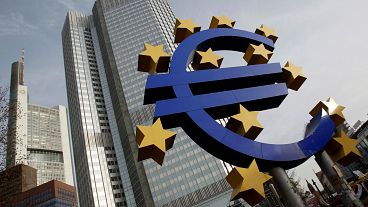Emergency funds at EU banks remain high whilst shareholders continue to profit from high interest rates.
Capital buffers, which are back-up stores of money held by banks, are well-stocked in the European Union.
The emergency funds amassed by the bloc’s top ten banks are €141.8 billion above minimum levels required by regulators, according to calculations by Bloomberg.
This compares to last year’s excess of €146.5 billion.
In an EBA report published this week, the European Banking Association (EBA) also looked at resilience trends in the year to June 2023, stating: “Banks' headroom above requirements remained at comfortable levels."
Capital buffers were brought in after the 2008 financial crisis to guarantee a stronger global banking system, and one of the requirements is that banks must have a minimum CET1 ratio.
A common equity Tier 1 (CET1) ratio looks at how much core capital the bank has in relation to its risk-weighted assets, and under regulation known as the Basel Accords, banks are obliged to have a CET1 ratio of at least 6%.
This ensures they can be sufficiently prepared for financial shocks.
“The EU banking sector’s capital ratios reached new historic highs in June 2023 as banks reported an average CET1 ratio of 16.0%,” said the new EBA report.
Yet despite keeping the emergency coffers full, banks weren’t skimping on shareholder rewards either.
In 2022, dividend payments and share buy-backs were at record levels, with banks distributing almost €63 billion to shareholders.
This is up from the €48 billion figure forecast at the start of 2022.
Large shareholder payouts were partially possible in 2022 thanks to high interest rates, which allowed banks to rake in hefty profits on loans, but the lasting effects of elevated rates may now kick in.
Due to large borrowing costs, lending is continuing to slow, and this could affect profitability going forward.
With inflation now cooling, many are nonetheless hoping that the European Central Bank will cut rates early next year.
The next ECB interest rate meeting will be held tomorrow, but analysts expect a no-change decision.



